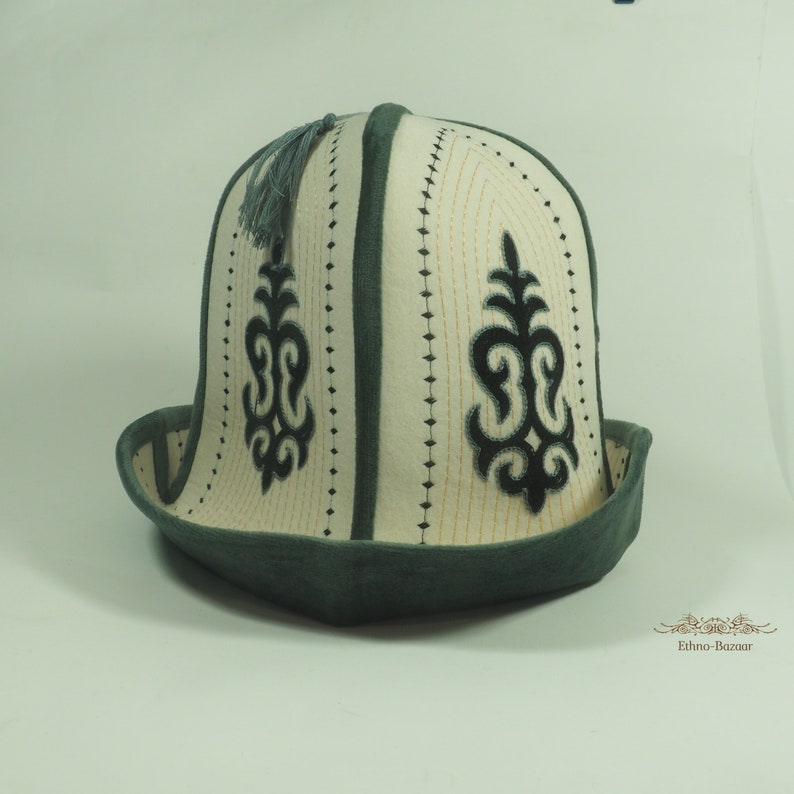
Dark Green Kalpak
Ethnic kalpak hat cap felt fleece velvet Kyrgyz nomadic embroidered qalpaq men horseman folk headwear traditional felted clothing headdress
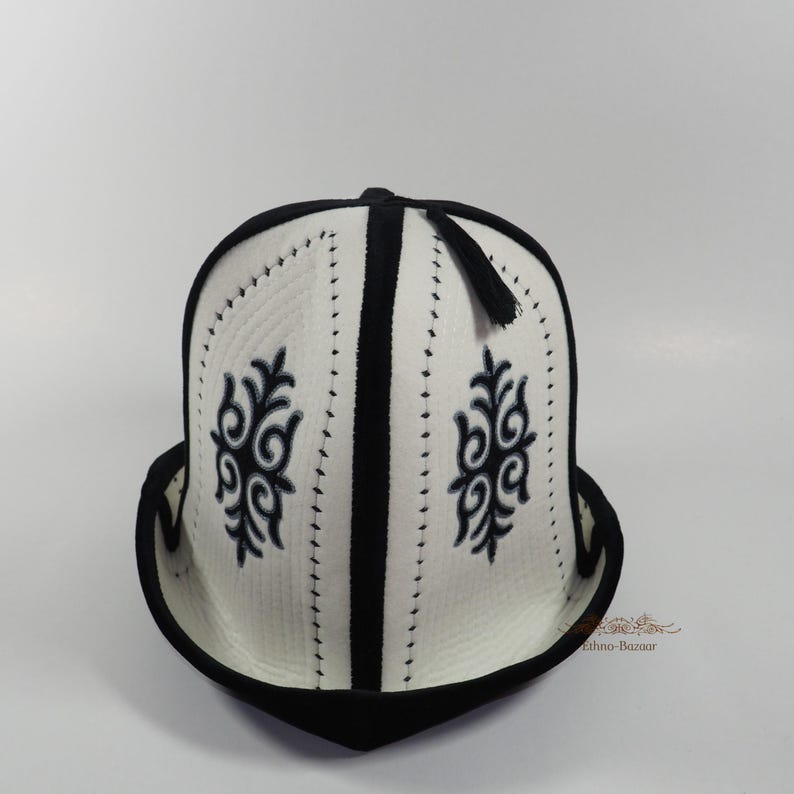
Black & White Kalpak
Premium ethnic kalpak hat cap velvet Kyrgyz nomadic qalpaq men horseman beanie folk headwear traditional clothing Kyrgyzstan headdress
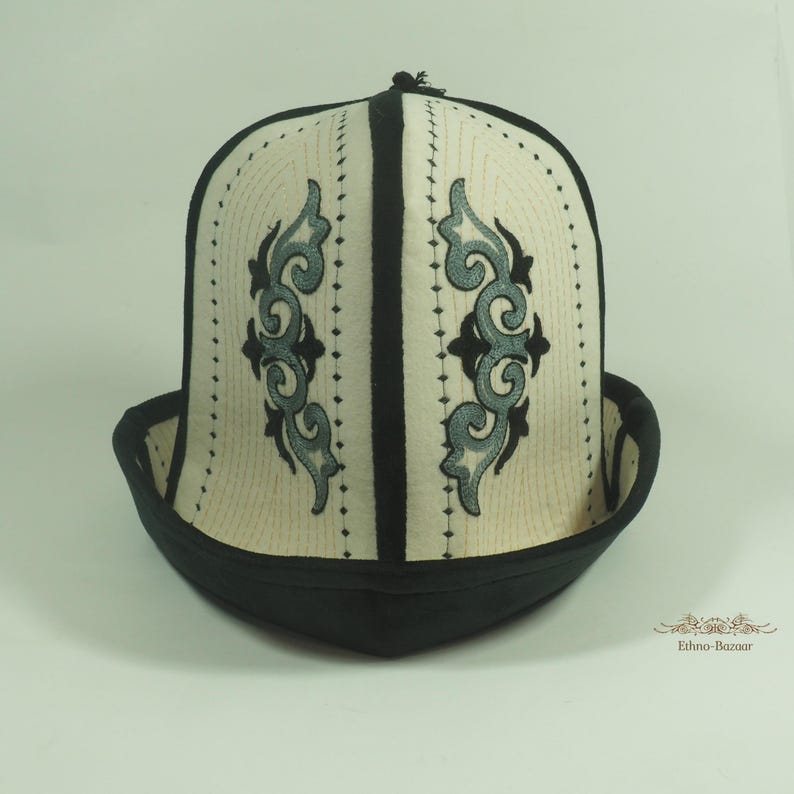
Green Kalpak
Nomadic hat kalpak qalpaq men ethnic felt cap embroidered folk headwear Kyrgyzstan gift dad national horseman hat Kyrgyz clothing headdress
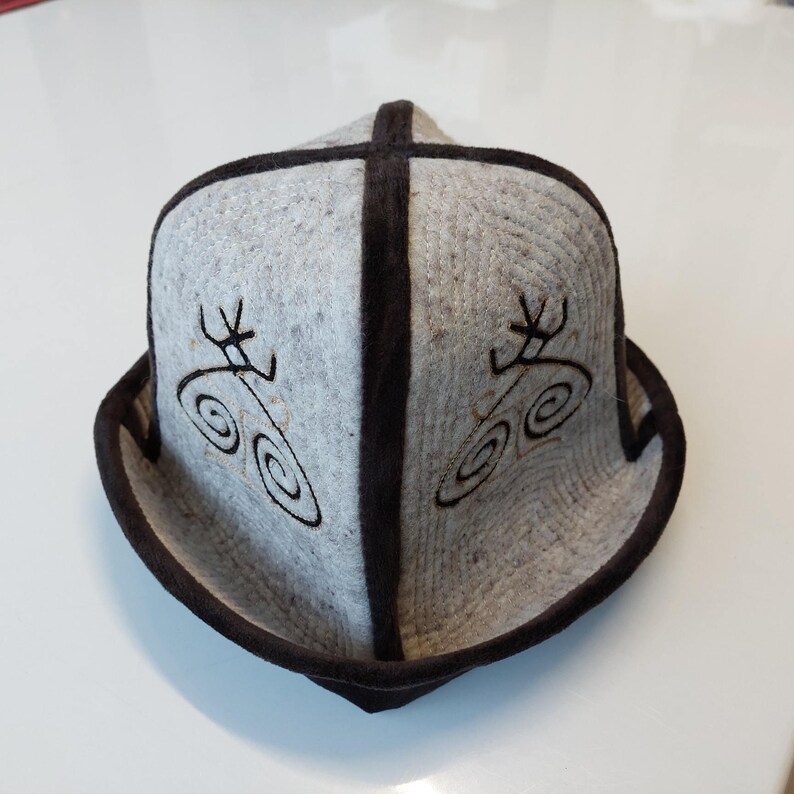
Black & Gray Kalpak
Merino wool Kyrgyz hat man ethnic felt embroidered kalpak qalpaq nomadic folk yurt headwear cap horseman felted festival headdress gift him
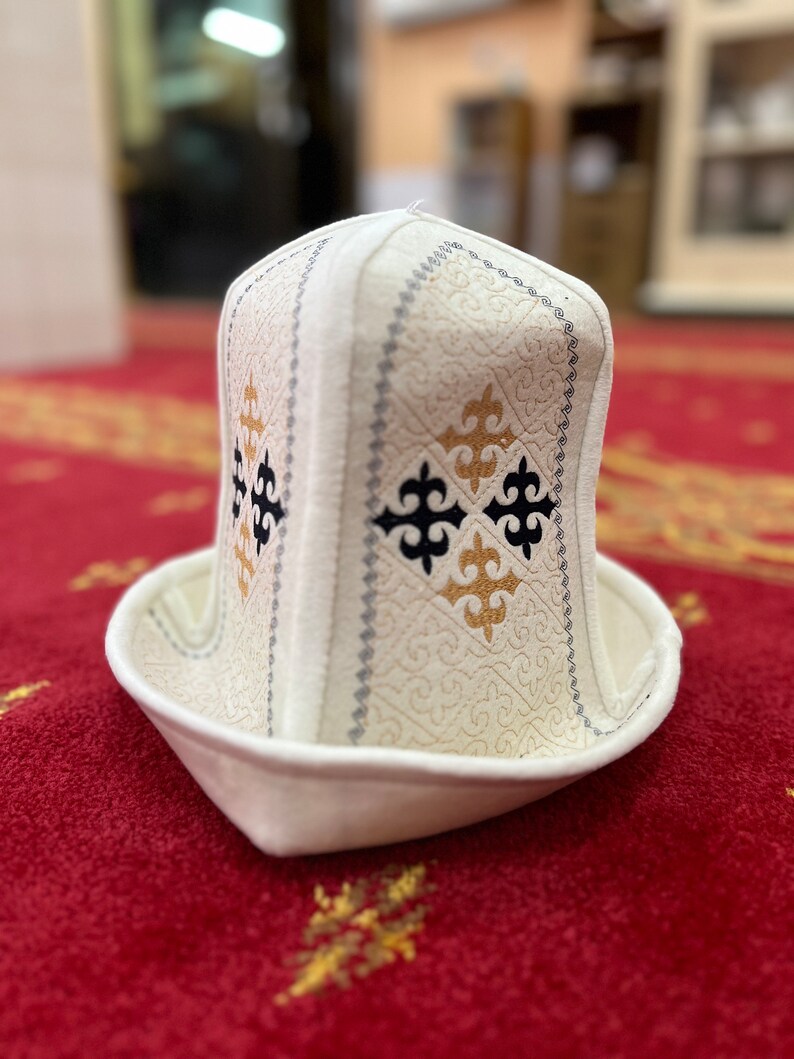
White Kalpak
Kalpak hat men ethnic felt embroidered qalpaq nomad folk headwear cap Kyrgyzstan culture national Tribal Winter headdress size 23 – 25 inch
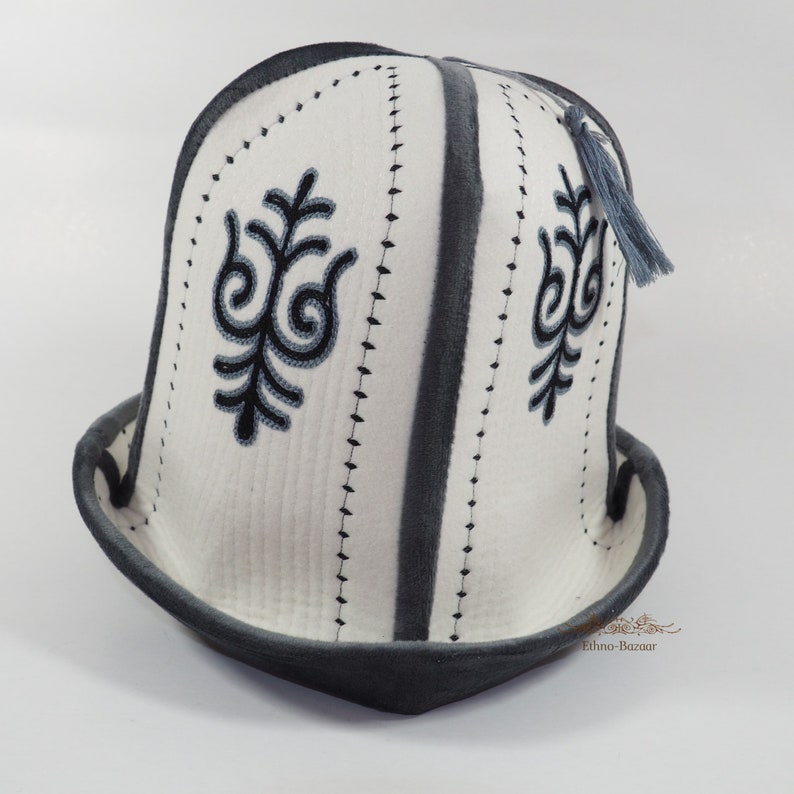
White & Gray Kalpak
Gray white ethnic hat kalpak cap velvet Kyrgyz nomadic qalpaq men horseman beanie folk headwear traditional clothing Kyrgyzstan travel gift
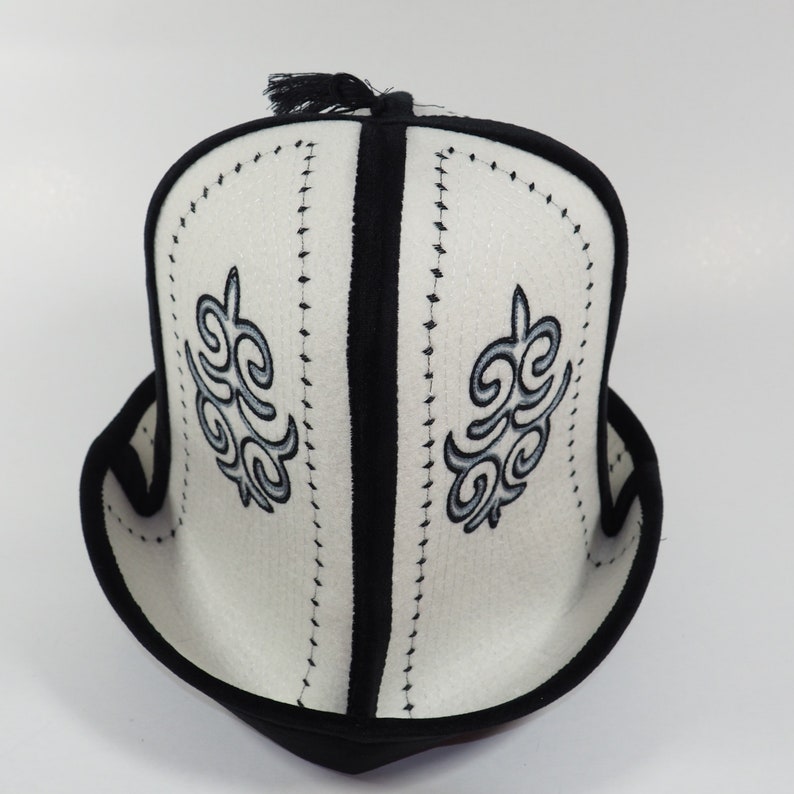
White & Gray Kalpak
Ethnic Kyrgyz kalpak hat cap felt fleece velvet nomadic embroidered qalpaq men horseman folk headwear traditional felted clothing headdress
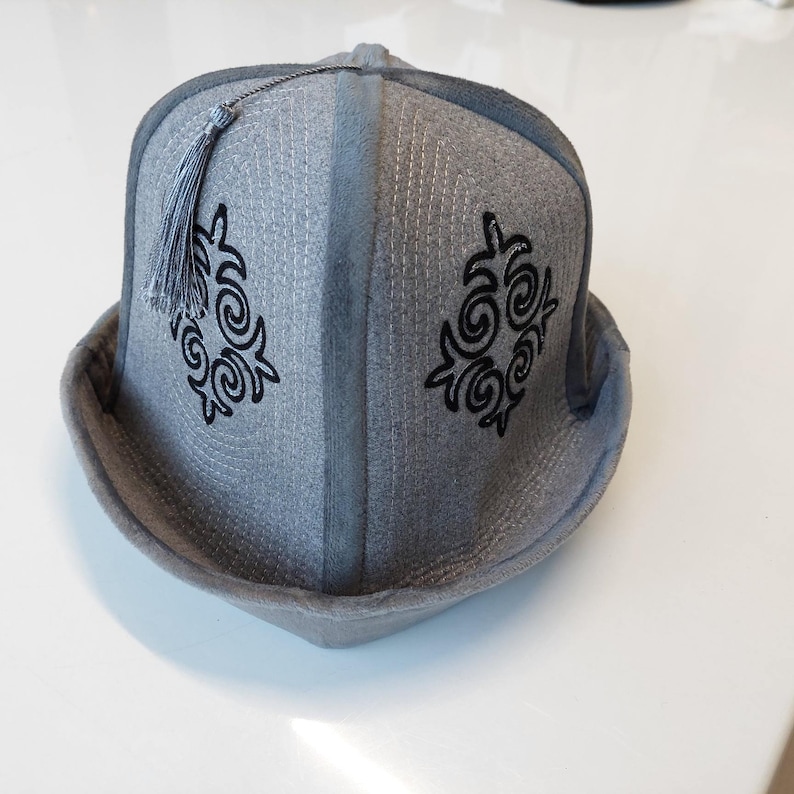
Gray Kalpak
Nomadic kalpak cap traditional Kyrgyz man hat qalpak skullcap beanie embroidered velvet Kyrgyzstan tribal nomad horseman headgear headdress
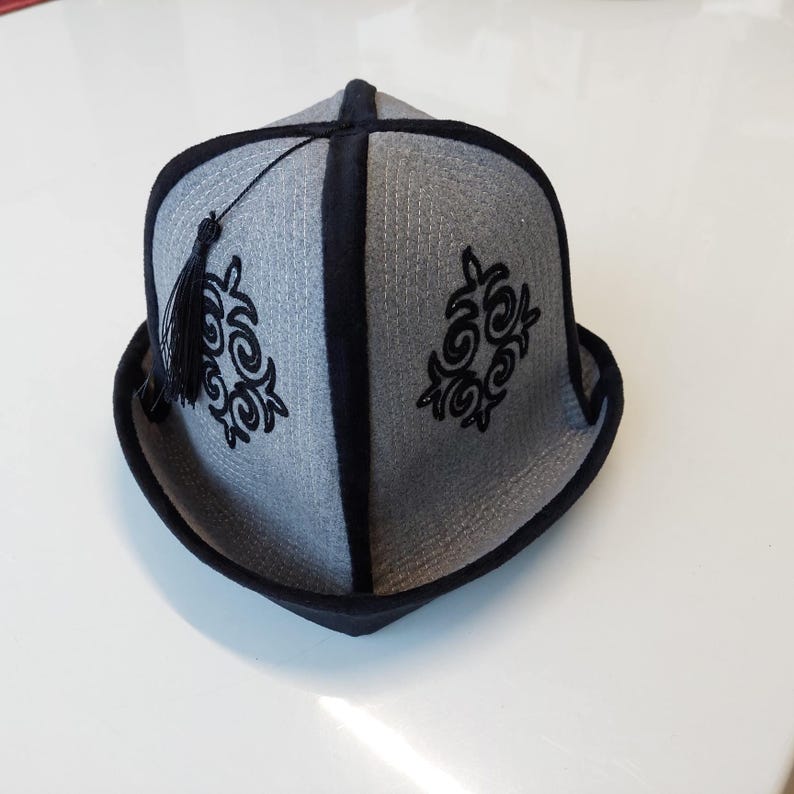
Black & Gray Kalpak
Ethnic kalpak cap traditional Kyrgyz man hat qalpak skullcap beanie embroidered velvet Kyrgyzstan tribal nomad horseman headgear headdress
What is Kalpak?
The Kalpak is a traditional Kyrgyz hat made of white felt, known for its distinctive high, conical shape and often decorated with black embroidery. It serves as a symbol of Kyrgyz national identity and pride. The Kalpak is worn by men on various occasions, ranging from daily life to significant cultural events. Its simple yet elegant design represents the harmony between nature and Kyrgyz nomadic traditions.
History of Kalpak
The Kalpak dates back centuries and is deeply rooted in Kyrgyz nomadic culture. It evolved as a practical headpiece suited to the harsh climate of Central Asia, providing protection against both the intense summer sun and cold mountain winds.
Historically, the Kalpak was not only functional but also symbolic:
- It represented the wearer’s social status, age, and region. For example, elders often wore more elaborately designed Kalpaks to signify wisdom and respect.
- The white felt symbolizes purity, and the black embroidery often incorporates traditional Kyrgyz patterns, reflecting the wearer’s cultural heritage.
In the Soviet era, the Kalpak saw a decline in everyday use due to modernization and urbanization. However, it experienced a revival post-independence, becoming a strong symbol of Kyrgyz identity and pride.
How Kalpak is Made
The Kalpak is traditionally handcrafted using natural felt, which is both lightweight and insulating. The process involves:
- Felt Production:
- Wool from sheep is cleaned, carded, and layered.
- The wool is soaked, pressed, and rolled until it binds together into a durable felt sheet.
- Cutting and Shaping:
- Pieces of felt are cut into specific patterns, often resembling four symmetrical panels.
- The panels are sewn together to form the conical shape of the Kalpak.
- Decorating:
- Black thread or silk embroidery is added to the edges and sides of the hat, often featuring Kyrgyz motifs such as stylized animal or plant designs.
- Final Touches:
- The Kalpak is steamed and shaped for a crisp appearance.
- Edges may be reinforced with additional stitching for durability.
Traditions & Moden Day Fashion
The Kalpak was treated with great reverence—it was never placed on the ground and was carefully stored when not in use. Men of all ages wore it, with variations in design marking different life stages, such as simpler versions for younger men and more elaborate ones for elders. During ceremonies, weddings, and other important events, the Kalpak was a prominent part of the attire, signifying respect and cultural pride.
In modern times, the Kalpak has evolved from a daily necessity into a symbol of Kyrgyz identity and heritage. While it is no longer worn every day, it remains a key element in cultural celebrations, national holidays, and special occasions. The Kalpak has also found its place in fashion, with contemporary designers creating stylized versions for both men and women, blending traditional elements with modern aesthetics
Frequently Asked Questions
he Kalpak is a traditional hat worn by men in various Turkic cultures, notably in Kyrgyzstan, where it holds significant cultural importance. Here are some FAQ and most commonly asked questions.
How much does Kalpak cost?
The price of a Kalpak can vary widely based on factors such as craftsmanship, materials used, and the intricacy of its designs. Simple, mass-produced Kalpaks may be relatively affordable, while handcrafted versions with elaborate embroidery can be more expensive.
What is Kalpak made from?
Traditionally, the Kalpak is made from felted wool, primarily sourced from sheep. This material is chosen for its insulating properties, offering warmth in cold climates and breathability in warmer conditions. The felt is crafted by matting and pressing wool fibers together, resulting in a durable and flexible fabric suitable for headwear.
How to wear Kalpak?
Wearing the Kalpak involves placing it squarely atop the head, with the embroidered designs facing outward. The hat’s structure allows it to sit comfortably, providing shade from the sun and insulation against the cold. In Kyrgyz culture, the Kalpak is worn by men during various occasions, from daily activities to significant ceremonies and festivals.
Is there any meaning behind Kalpak?
Beyond its practical use, the Kalpak holds deep symbolic meaning. Its tall, pointed shape is said to represent the snow-capped peaks of Kyrgyzstan’s mountains, reflecting the nation’s natural landscape. The four sides of the hat are interpreted to symbolize the cardinal directions or the four elements—earth, water, air, and fire—emphasizing harmony and balance. The intricate embroidery often depicts patterns significant to the wearer’s lineage or regional identity, serving as a visual representation of one’s roots and familial connections.
